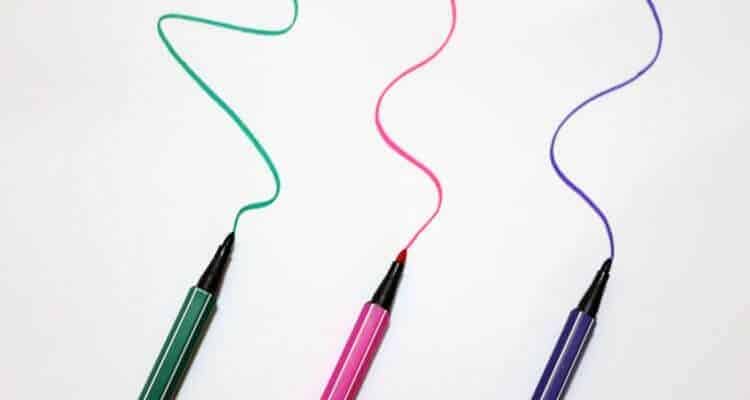In this article, we’re going to cover important charting tips for nurses.
Whether you’re a new nurse or a seasoned nurse, we’re confident that you’ll find something from this list that will help you in your nursing career.
*disclosure: this post may contain affiliate links. If you click and make a purchase, I may receive a commission. For more info, please see my disclaimer.
Why is Patient Charting Important?
Patient charting is important for several reasons:
- It gives a record of everything that was done regarding that patient’s medical health care. (Ex. past surgeries, past medications received and so forth)
- If the patient’s health starts deteriorating providers can go back through the patient record to see what might have been the cause of that.
- In the case of medical malpractice and the hospital is sued the charting (NOT your memory) is what’s going to be used in court to outline the care the patient received. Honestly, a patient’s trial could happen so many years after your interaction with them you might not even remember the patient let alone the treatment you provided.
Patient charting is just a fact of life when it comes to the nursing profession.
Most of us love the patient care aspect of being a nurse but dread the paperwork aspect of nursing.
Some nurses hate it so much they get sloppy with their charting. One of my goals from this article is to encourage you not to be one of those nurses.
You see, at the end of the day you know the saying if you didn’t chart it, it didn’t happen.
For that reason and many others, you need to master the skill of charting to make sure you give yourself credit for the patient care you did.
Charting Tips for Nurses
Here’s our top nurse charting tips…
1. Think Like a Lawyer

Whenever I’m charting and struggling to figure out how much information to write or what to include I ask myself if this went to court what would they want to know.
There are no assumptions being made in court and as I’ve already stated many times, the cases are going to happen so many years after our interaction with the patient that your charting will be the only reliable way you’re going to remember the care you provided.
2. Stop Double Charting
There’s enough double charting we’re required to do. What we don’t want to do is create more double charting work for us.
For example, if you’re charting system is electronic many of them have flowsheets. Your electronic charting system might call it something different.
Regardless the main point is if you’ve charted something in another area of the chart, don’t bother mentioning it in your narrative note unless there’s a picture or context you’re trying to paint.
An example of double charting would be charting 100% for meals (dinner) in the I/O flowsheets and than charting patient ate all of their dinner in the narrative notes.
3. Avoid Inconsistent Charting
If there’s one thing that’s going to hang you out to dry, is charting that’s inconsistent.
That’s part of the reason why if possible avoid double charting because it increases the chances you’re going to have inconsistent charting.
An example of inconsistent patient charting would be charting in the flowsheets that the patient’s lung sounds were clear and then in your nursing note for the same assessment time charting coarse crackles as lung sounds.
4. Document Events As They Happen
I know. I know. This is another chart in real-time vs batch documentation debate. From my experience charting in real-time is easier and decreases your chances of making mistakes.
On paper, it seems like batch charting would be quicker. (You would go and do everything you need to do on all your patients and then sit down and chart everything on every patient at once.)
The issue is trying to keep everything straight.
Part of the problem is that it’s never as easy as you think it’s going to be. Between doctors, call-lights, and everything else, you might have good intentions but then realize at the end of your 12-hour shift that you haven’t charted hardly anything.
When you finally do sit down to chart, you’ll spend so much time trying to figure out…
- What did you do?
- Which patient was it?
- What time did the action happen?
…that it would have been quicker to have been charting in real-time when the information was fresh in your memory.
While it’s not always feasible during a shift documenting in real-time when possible is the best practice and makes everything go smoother.
Nurse Pro Tip:
If you find yourself struggling with being able to chart in real-time, try to chart the findings that are not normal. (For example, you assess a patient and notice the patient had a heart murmur, and everything else was WNL (within normal limits) or WDL (within defined limits), just chart the murmur, and when you get a chance go back and document everything else.
5. Keep Paper Handy to Jot Down Notes
I mentioned above that your goal should be to chart in real-time. Unfortunately, you’re not always going to get a chance.
For that reason, you need to keep scratch paper or “your brain” handy to take notes so you can chart them as soon as you get a chance.
Different nurses have their ways of jotting down notes, so try asking other nurses how they take notes.
Personally, for me, I carry “my brain” and a separate sheet of scratch paper in a foldable clipboard (Amazon link) similar to this one:
- Full size folding pocket nursing clipboard with the most daily use medical information referenced on...
- Lightweight aluminum with sturdy construction in a foldable pocket clipboard
- HIPAA compliant design to hold sensitive patient documents including medication lists, rounding...
I like it because I can fold it and put it in my side scrub leg pants.
Another tip worth mentioning is if you’re jotting down notes is to buy your own pen. I recommend this for several reasons:
- You don’t have to rely on the hospital to provide this (you might have to hunt one down, or the one they have is not very good).
- You can make sure you’re using a “click” pen. (Click pens are awesome because you don’t have to deal with caps and you can use them easier with one hand).
If you’re looking for some good pens to use on your shift, I recommend Pilot pens (Amazon).
- Smooth & Long-lasting: Enjoy a smooth writing experience thanks to the gel ink that glides...
- Comfortable Grip: A contoured rubber grip provides ergonomic support, making long writing projects...
- Versatile: Perfect for everyday writing tasks such as taking notes and jotting down grocery lists;...
Pilot pens are my preferred pen because they’re of good quality and write smoothly.
But (I know, there’s always a “but”) the downside is they’re a little bit pricier than some cheaper pens (on Amazon), but I think they’re definitely worth it.
6. Avoid Charting Ahead of Time
With how busy you’re going to get, your going to be tempted to want to chart ahead time.
Don’t do it.
Just don’t.
First of all, if you’re using an electronic medical record (EMR) many will time stamp what time you entered the information regardless of when you’re saying you actually did it.
Plus, when you chart ahead of time you’re going to forget to change something at some point.
Either you ended up not doing something you documented you’re going to do, or you fail to go back and document findings if it ends up not going as planned.
7. Avoid Emotional or Opinionated Charting
When you’re documenting inpatient health records, you’re only charting the facts and nothing else. Avoid adding opinions or emotions in patient files.
This can be easier said than done, especially if you’ve had an emotional interaction with the said patient or family members.
This tip is especially important for ER nurses and mental health nurses who deal with patient interactions that can become emotionally charged.
Pro Tip:
Remember to think about how would your note look and sound to an outside person if it was to go before a courtroom.
Avoid these Other Common Nurse Documentation Mistakes
8. Trying to Pass off Chicken Scratches as Handwriting
Make sure your writing is legible and not just to you but to everyone else. In the age of EMRs, this is becoming less and less of an issue, but there are still documents nurses have to fill out that’s not electronic.
9. Using Fun Color Ink Pens

Best practice for writing in any legal documents (which your paper charting is) is to use a blue or black pen ONLY. Some facilities might only let you use black ink. Make sure you know what your facility policy is.
10. Making up your own Abbreviations
You would be shocked at the random abbreviations I’ll see nurses using in their notes.
If it’s not joint commission approved, don’t use it. If your nurses’ notes were to go to court, you don’t want lawyers trying to interpret what you “meant to say.”
If you need a refresher on what the current Joint Commission approved abbreviations are…you can check it out at the Joint Commission website.
11. Not Following HIPAA Guidelines
Patient privacy is a big deal. Be careful where and when you’re charting and talking about patient information. Also while I’m at it please, please, please, stay off social media with patient information.
12. Charting in the Wrong Patient’s Chart
This is an easy mistake to make and typically happens in hectic shifts or if you have patients with similar names.
Figure out a pattern and try to stick with it because charting in the wrong patient’s chart “if it’s noticed in time” can be fixed, but it’s a hassle and creates more work for you.
13. Rambling On and Not Being Concise
When charting try to be concise as much as possible. Details given should be pertinent and have a point for putting it into the notes.
I should mention that there are situations that might require more context than others (and honestly, knowing the difference usually comes with time), but do remember you’re writing notes, not novels.
14. Erasing Patient Charts
Each facility has its own strict policy for how you can correct charting mistakes and errors. Make sure you know what you’re facility policy is.
15. Altering Patient Charts
You can NOT remove documents or falsify patient charts for any reason. You might think nobody is going to notice and you’re trying to avoid getting in trouble, let me tell you someone probably will notice.
Final Thoughts

If you’ve read or looked through this list and you’re saying to yourself these are very obvious tips, then my response would be are you following any of those tips?
If not, then consider this another reminder to try implementing some of the tips mentioned in this article.
Patient charting can be a frustrating part of most nurses’ shifts.
If you think about it you went to school because you wanted to take care of patients, not charts.
Even though it’s frustrating, it’s one of the most important things we can do as nurses for “CYA” purposes because as we all know “if you didn’t chart it, you didn’t do it.”
Do you have any other tips we didn’t mention? Let us know what your thoughts are in the comments sections.



